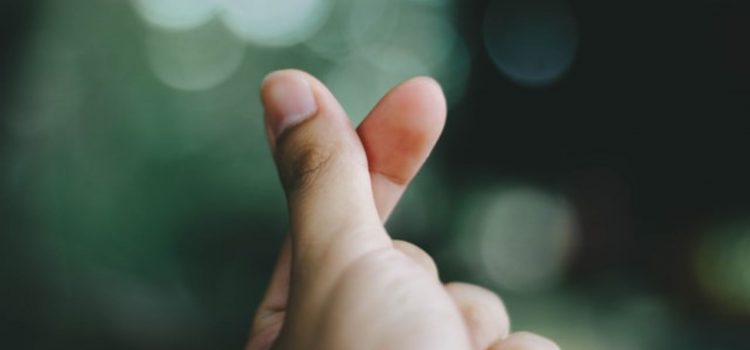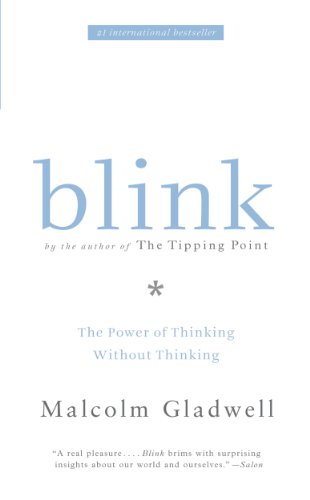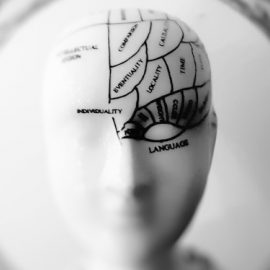

This article is an excerpt from the Shortform summary of "Blink" by Malcolm Gladwell. Shortform has the world's best summaries of books you should be reading.
Like this article? Sign up for a free trial here .
How do we make snap decisions? In what circumstance is it a good idea to make a snap decision, trusting your gut?
Snap decisions are made on the fly—unconsciously, without rational deliberation. But that’s not necessarily a bad thing. According to Malcolm Gladwell, the author of Blink, in some circumstances, it’s better to decide on the fly than to deliberate on how to proceed.
Keep reading to learn about the power of snap decision-making, why some snap decisions are better than others, and how to make better snap decisions.
How Do We Make Snap Decisions?
We usually think of snap decisions as lazy, superficial, and probably wrong. But are they really? Gladwell argues that snap judgments can be just as good as—or even better than—the decisions that we make by analyzing a situation carefully. According to Gladwell, both logical, conscious decision-making and snap judgments have their time and place. Our brain uses two broad strategies for making decisions:
Strategy #1: Conscious Thinking
This thinking is also known as rational decision-making. When we think consciously, we use past experiences and current information to make a decision logically.
Strategy #2: Unconscious Thinking
This thinking is also known as the adaptive unconscious, intuition, or making snap judgments. When we think unconsciously, we make decisions without understanding why, or sometimes even without realizing we’ve made them.
Gladwell says we use these two different thinking strategies in different situations.
| Professional Intuition Selectively Improves Our Snap Decisions When we use the love lab analogy for thin-slicing, we can immediately see why some snap decisions are better than others. If your unconscious mind has had enough experience in a particular area to build up an accurate, well-organized database, your snap decisions will draw on this database and are likely to be sound. But if you’re a novice in a particular area, your database will probably be small and not very accurate: a recipe for bad decisions. Psychologist Gary Klein came to a similar conclusion in his work on the role of experience in rapid decision-making. Klein was interested in experienced firefighters, who have to make fast, potentially life-or-death decisions under pressure. He found that over time, these firefighters had built up an unconscious “prototype” of a typical building fire. When the prototype and the situation matched, their decisions were so rehearsed that they didn’t feel like decisions at all. But when the situation didn’t match the prototype, they got a “feeling” that something was wrong, which led to a different decision. For example, one lead firefighter took his team into a burning house, and they started hosing down the place they thought the fire was coming from. But the water didn’t work. He also noticed that the house was unusually hot and that he couldn’t hear the usual roar of flames. Not knowing what was going on, he decided to evacuate his team from the house. Less than a minute later, the floor they had been standing on collapsed. This fire chief said he’d had a “sixth sense” about the need to evacuate—but Klein says that he made the call because his unconscious mind had noticed a mismatch with the prototype. This work suggests that the quality of our snap decision-making is domain-specific. We wouldn’t, for example, expect a firefighter who makes exceptional snap decisions about burning buildings to be particularly good at analyzing marriages. |
How Can We Improve Our Snap Decisions?
Most of us think we can’t control our snap reactions. This assumption is both wrong and defeatist. Gladwell argues that we can improve our instinctive decision-making through deliberate training and by slowing down.
Gladwell proposes two strategies for improving our snap decisions: We can rehearse and we can practice mind-reading.
Strategy #1: Rehearse
Gladwell suggests that you practice making decisions, especially in environments and circumstances that mimic stressful situations. For example, rehearse your upcoming job interview or presentation in an environment that mirrors the actual event as closely as possible.
(Shortform note: Norman Doidge argues in The Brain That Changes Itself that when you practice something, you’re increasing your brain’s efficiency in executing the task. New tasks are cognition-heavy, recruiting a massive number of neurons across different brain areas. Practice helps our brains determine which networks or neurons are best suited for the task and lock in their responses, freeing up cognitive capacity for more and more challenging versions of the task.)
Strategy #2: Practice Mind Reading
As Gladwell explains, we read people’s minds by gathering information from their faces. We can get better at understanding others, and consequently make more accurate snap judgments about them, by practicing reading people’s facial expressions.
Humans are highly social animals. Our brains are tuned to cues that can help us navigate the complex social world. An important part of this is being able to make good guesses about what’s going on in other people’s minds. (Shortform note: In psychology, this ability to construct a model of someone else’s mind is called “Theory of Mind.” It includes keeping track of the other person’s knowledge—do they have the same information as I do?—as well as guessing at their emotional state.)
In improving mind reading, Gladwell recommends that we use microexpressions as clues to what other people are thinking. Microexpressions are expressions we make unconsciously. They’re almost imperceptible, lasting a fraction of a second. You might be good at broadly controlling the expressions your face makes, but you’ll still make involuntary expressions that betray your true thoughts and feelings.
(Shortform note: The effectiveness of microexpression analysis, especially for lie detection, is controversial. First, lies aren’t always associated with microexpressions: One study found them in only around 20% of participants who had been instructed to mask or neutralize their natural expressions. When microexpressions did occur, they were often inconsistent with the emotion being hidden.)
Additional Advice on Snap Decision-Making
Throughout the book, Gladwell suggests several ways we can make better snap decisions. We should limit the amount of information we consider, avoid rationalizing, and rehearse (particularly in stressful situations). We should also be aware of how unconscious biases—for example, the Warren Harding effect, sensation transference, and the mere exposure effect—get in the way of good snap decisions and do our best to counter these biases. How else can You improve your decisions? You can:
Be aware of the effects of transient emotions on decision-making. Daniel Goleman points out in Emotional Intelligencethat when you’re in a good mood, you tend to make more optimistic decisions; when you’re feeling down, you make more pessimistic decisions.
Consider the cognitive biases you’re bringing to a decision. In Thinking, Fast and Slow, Daniel Kahneman describes some common biases in human cognition that relate to our thinking about money. First, we tend to judge outcomes based on a fixed cognitive reference point that feels “neutral” (usually our current situation). Second, we evaluate our finances in relative terms rather than absolute ones (for example, a $100 increase feels much better if you start with $100 than if you start with $900). And third, while gains feel good, losses of the same amount feel disproportionately bad. Be careful of snap decisions that come from these biases, as they may lead you astray.
Learn to distinguish when snap decisions are appropriate and when they’re not. Some decisions are more suited to a fast approach, while others benefit from a more considered one (as an extreme example, consider choosing which flavor muffin to buy with your morning coffee vs. deciding whether to ask someone to marry you). For muffin decisions, snap away. For marriage decisions, a more conscious process is usually desirable.
Consider your approach to the decision-making process itself. In The Paradox of Choice, psychologist Barry Schwartz argues that there are two main ways that people approach making decisions: They either try to pick the very best option from a large range of options (“maximizers”), or they carry a set of criteria into a decision and choose the first option that acceptably satisfies the criteria (“satisficers”). Maximizing may seem like the best approach, but it turns out that compared to satisficers, maximizers are less happy, less satisfied with their lives, more depressed, and more prone to regret. If you’re a maximizer, consider test-driving the satisficer method.
| How Should We Measure the Quality of Our Decisions? Not all decisions are created equal. A decision about which flavor of potato chips is your favorite, for example, has very different ramifications than a doctor’s decision about a patient’s diagnosis. For trivial decisions that relate to personal preference, such as choosing a poster for your wall, it makes sense to judge the decision based on people’s satisfaction with their choice after a period of time. When decision quality is measured this way, decisions based on unconscious thought come out ahead of those based on conscious deliberation. However, asking a doctor or patient whether they’re satisfied with a particular diagnostic or treatment decision isn’t the best way to measure decision quality in a medical context. More objective criteria, such as the progression of the patient’s illness, are needed. Getting the balance right between satisfaction and thoroughness can be tricky: As one 2011 study found, patients are less satisfied when a clinician communicates uncertainty in their decision (for example, if she says that there are several options for treatment and no clear best one). Clearly, the solution here isn’t that doctors pretend more certainty than they feel. Instead, the authors recommend that doctors involve the patient in the decision, making it clear that some degree of uncertainty is normal. |
———End of Preview———

Like what you just read? Read the rest of the world's best summary of "Blink" at Shortform . Learn the book's critical concepts in 20 minutes or less .
Here's what you'll find in our full Blink summary :
- How you can tell if a marriage will fail, within 3 minutes
- Why your first impressions are usually surprisingly accurate
- The dark side to making first impressions, and how to avoid the,






